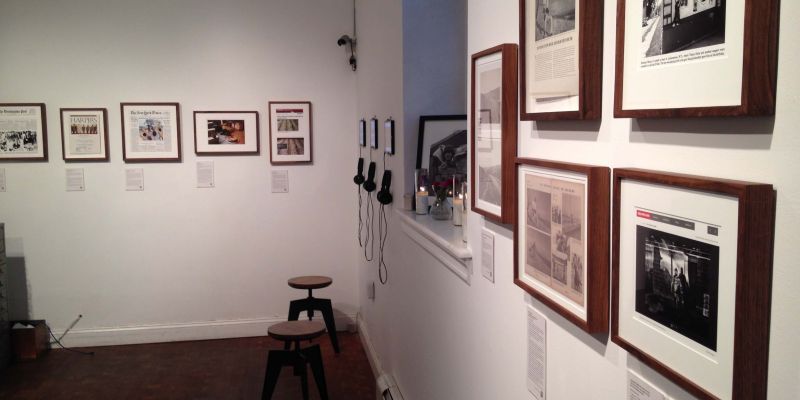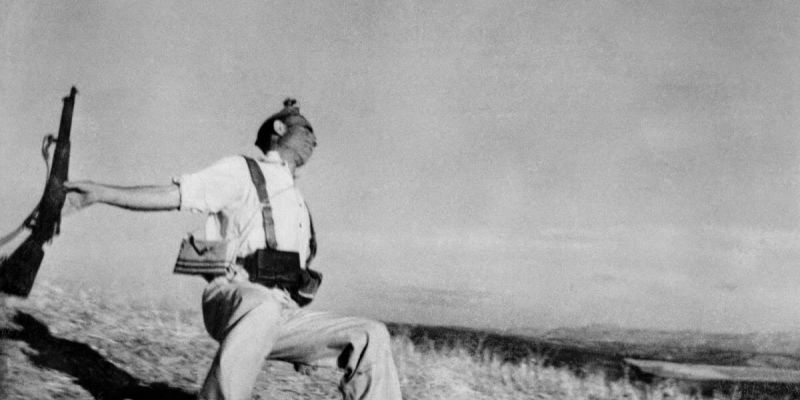Eva Stenram @ Siobhan Davies Studios reviewed by Helena Haimes
Images courtesy of Eva Stenram
To take in all of Swedish artist Eva Stenram’s works installed at Siobhan Davies Dance Studios, you have to take a pretty comprehensive tour of the seminal dance company’s extraordinary building. Its design fuses original elements of the original Victorian school — with its chipped tiles and bare brick — with the recently added elements of polished concrete, glass walls and taut cables.
The architecture is so immediately attention-grabbing that any practitioner who attempted to outshine it would fall horribly flat. Luckily, Stenram’s pieces — which are hung in corridors, balcony areas and even, yes, a disabled toilet — compliment their surroundings without trying to compete with them. Acting as playful, absurd, and occasionally sinister commentaries on movement and the human form, they rise to the challenge of engaging with a potentially difficult, unconventional set-up.
This is the first time that Parts (2013 – ongoing) has been shown in the UK, and the exhibition showcases six pieces from the series. The artist has taken photographs of pin-up models from the 1960s, digitally erased everything but their legs, and printed the results onto fibre-based paper.
Stockinged and stilletoed, the single limbs are left leaning on a modernist sofa; loitering awkwardly on an enormous bed; or lying on a shag pile carpet in a Hitchcockian, wood-panelled room.
These images have more than an echo of the surrealist photographer Hans Bellmer, though they are marginally more humorous and certainly less perverse. Any eroticism that the originals 60s pin-ups may have contained is entirely diffused by the silly helplessness of a lone, racy leg still trying — and failing — to be seductive.
In Sternam’s world, a body part out of context becomes highly charged or just plain comical. In Arrangement (after Irving Klaw) (2015), installed outside one of the first floor rehearsal studios, three photographs are reframed by a passe-partout. You have to really peer in – peeping tom style – to see a flexed hand, beautifully-turned shin, or another one of those silly legs, this time clad in a clunky court shoe.
It feels like the artist is exposing the deep un-sexiness that can result from trying too hard to be sexy. In this way he highlights the fine line between looking sexually appealing and just, well, a bit pathetic.
Hold (2015) takes us on a destabilising tour of a single image using a series of slides shown on an archaic projector. In slow-mo, the work deliberately maps the process of looking at a pin-up photograph and so can be read as a meditation on the voyeuristic nature of looking. Score for A Sequence of Poses (2015) – a series of smaller photographs featuring more isolated, female limbs – makes a much heavier reference to choreographed movement. Described as ‘photographic scores’, they border on the filmic and the choice of an office-style, grey pinboard lends them a sense of a work in progress.
The pieces that operate most successfully here (works like the Parts series) utilise contemporary technologies to ask questions of historical material – just like the building that contains them.
Images courtesy of Siobhan Davis Dance.
Hel ena Haimes is a freelance arts and culture writer based in London. She studied at Goldsmiths College and the University of the West of England, and contributes to a range of publications as well as writing a visual arts blog.
ena Haimes is a freelance arts and culture writer based in London. She studied at Goldsmiths College and the University of the West of England, and contributes to a range of publications as well as writing a visual arts blog.
Tags: contemporary photography, eva stenram, exhibition review, london, london photography exhibition, photography exhibition, siobhan davies studios, surrealist photography



